BEYOND THE DOOR (1974)
A young pregnant woman in San Francisco is going to have the devil's baby during her strange possession.
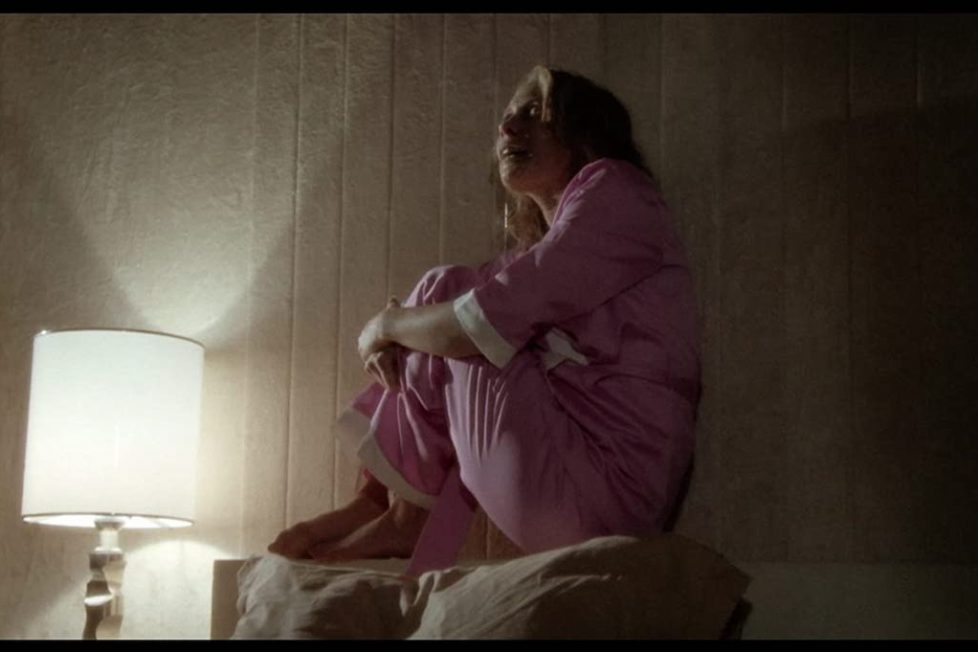
A young pregnant woman in San Francisco is going to have the devil's baby during her strange possession.


When a film opens with the Devil providing a tongue-in-cheek voiceover, set against shots of a dark room filled with candles, certain expectations arise about what lies ahead. Considering the opening’s jokey tone and the Devil’s final line “don’t forget that the stranger in the seat next to you could be me,” one would think we’re in for a throwback to the campy drive-in horror of William Castle. What follows instead couldn’t be further from that brand of quaint nostalgia!
Beyond the Door couldn’t have been made in any decade other than the 1970s, as it inhabits the phrase ‘of its time’. It looks like it was made by a sentient pair of bell-bottoms; over the opening credits alone we are subjected to gratuitous moustaches, big afros, funky bass riffs, a bargain-bin soul theme song, ascots, perms, and (perhaps most revealing) hilariously incongruous dubbing.
Existing somewhere at the intersection of Rosemary’s Baby (1968) and The Exorcist (1973), directors Ovidio G. Assonitis and Robert Barrett saw an opportunity to make easy money: borrow liberally from recent horror classics, push the special effects past the point of good taste, and you’ll guarantee a successful horror movie of your own, right? Despite its crude filmmaking and production values, the unlikely answer to that question is ‘yes’—financially at least! This half-baked rip-off grossed $15M at the box office, approximately 43x its $350,000 budget!

In terms of entertainment value, things get more complicated, but at least nobody can argue Assonitis and Barrett were anything but upfront about their influences! The film follows a San Francisco family—Jessica Barrett (Juliet Mills), her record executive husband Robert (Gabriele Lavia), and their two children Gail and Ken (Barbara Fiorini, David Colin Jr.)—as Jessica’s saddled with an unexpected pregnancy. When the unborn child starts maturing at an unusual rate and Jessica begins to experience psychotic mood swings and auditory hallucinations, it becomes clear the father isn’t Robert… it’s Satan.
As soon as he’s finished ripping off Roman Polanski, the directors quickly move onto William Friedkin’s Catholic horror classic The Exorcist. The entire Barrett family becomes subjected to supernatural phenomena, including heads spinning, pea soup vomit, and Jessica speaking in demonic tongues. Sound familiar?
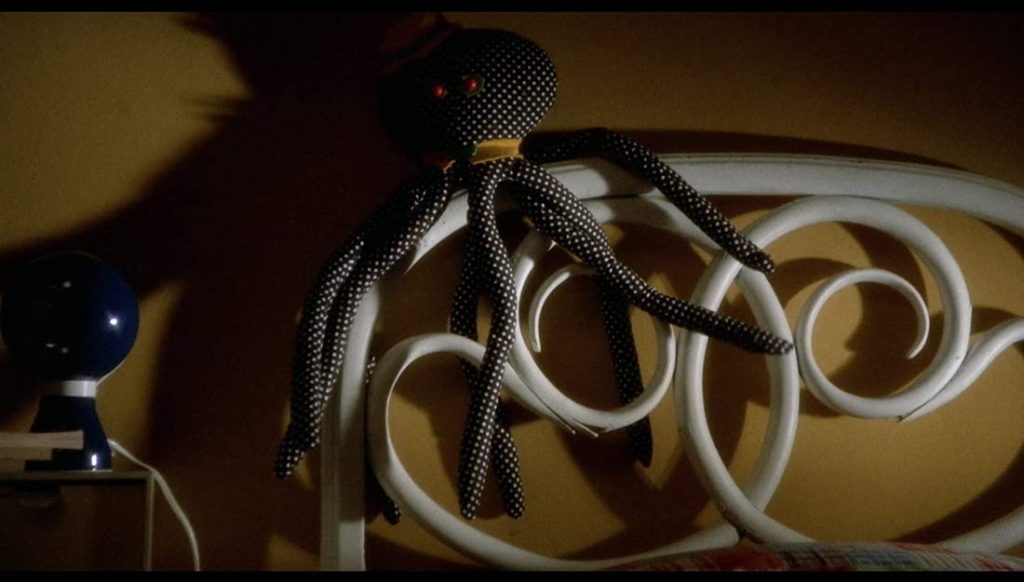
Despite the wealth of borrowed plot points, stylistically it leans more into being Nicolas Roeg-lite, which is fitting given that the family looks like they’ve just walked off the set of a Don’t Look Now (1973) porn parody. Repetitive rhythmic cuts and slow-motion are used during pivotal scenes to create a sort of free-associative montage effect, but it doesn’t seem to be employed for any real purpose like it was in Roeg’s film.
In one especially bizarre scene, Jessica’s walking down the block trying to suppress demonic voices in her head when the camera suddenly crash-zooms on a banana peel on the ground! This bastardization of stylistic devices makes clear that the name of the game is imitation without context: the film tries on the clothes of all the most interesting and innovative horror films of the last five years or so, hoping the resulting stylistic mishmash will be exciting rather than cluttered. There’s no denying there’s entertainment value to be found in that kind of manic filmmaking, but it certainly doesn’t help differentiate Beyond the Door from the dozens of other exploitation films that took that same approach.
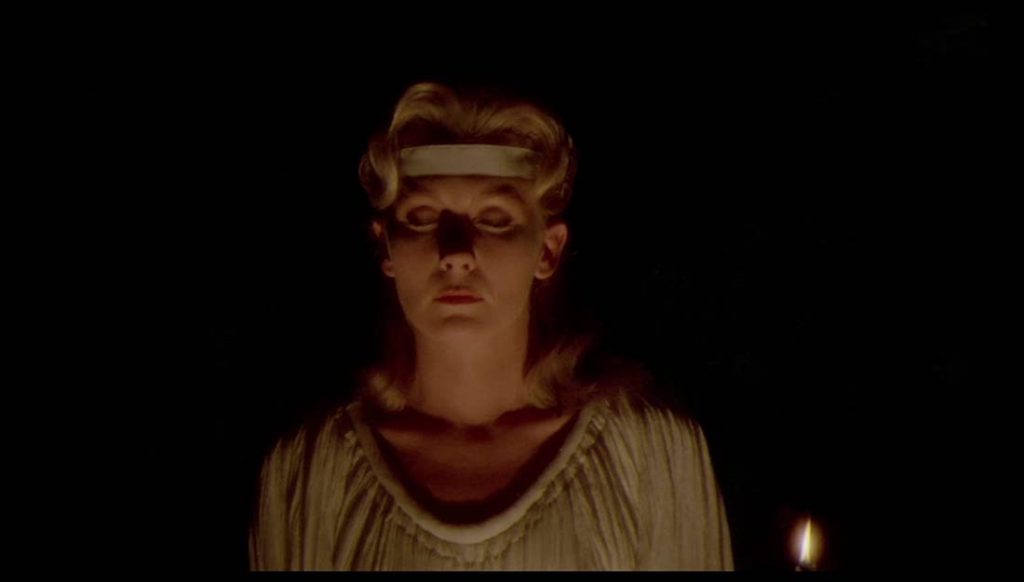
If anything, Beyond the Door aims to one-up the films it’s copying by taking the SFX to ridiculous extremes. Did you like the vibrating and levitating bed in The Exorcist? Try the scene in which the children’s entire playroom violently shakes with the children in it. Thought the hospital scene in Friedkin’s film was frightening? This time around, the possessed victim is hooked up to even more invasive tubes and freaky hospital equipment. Did you enjoy Rosemary’s Baby but wish it had more shots from the perspective of a disembodied eyeball that fell on the carpet? We have those! That same amplified quality extends to the script. When Jessica asks Robert if he knows what her name means, he lists “sweetness, deplorable romanticism, and one hell of a great ass.” This is the level at which you have to meet the movie.
As is often the case with an exploitation film this front-loaded, it stalls about halfway in. For a good 20-minutes we’re forced to go through the possession movie motions—Robert doesn’t know how to treat his wife, he meets a mysterious man who may have the answer, the reason for her possession is investigated, and so on. This dry patch culminates in a real headscratcher of a scene in which Robert’s followed and harassed in the street by three men with flutes and drums, stripped of all diegetic sound except a terrible funk song that repeats “there’s no hope” over and over again. If that sounds like it’s taken out of context, I assure you there’s no context and the scene lasts a full four minutes!
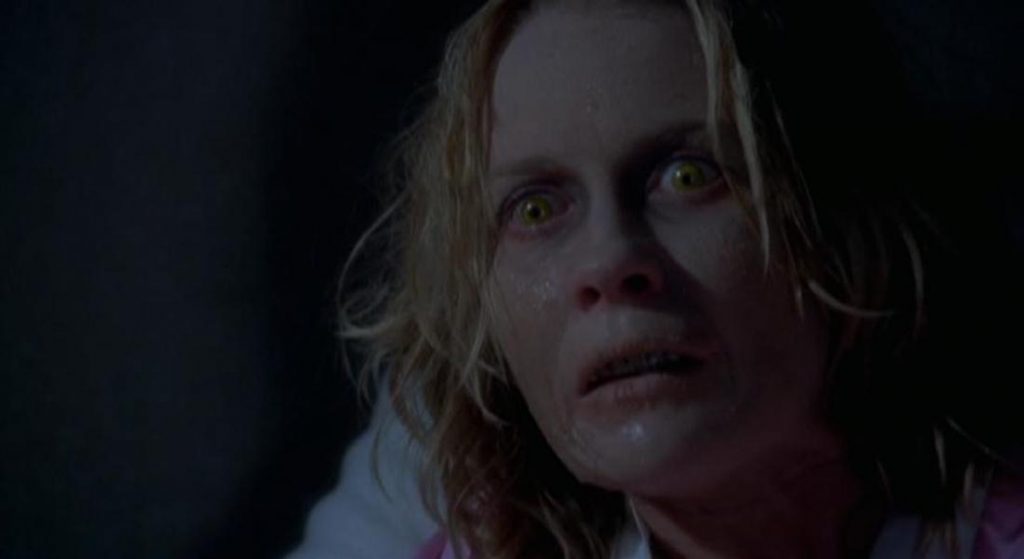
Scenes like that are representative of Beyond the Door’s ‘throw it at the wall and see what sticks’ approach to filmmaking. A good third of the movie could have painlessly cut and it would’ve been better for it, but Assonitis and Barratt are so intent on trying everything they never bothered removing what didn’t work. It’s entertaining on a moment-by-moment basis (as there’s no way of knowing what crazy stunt will be pulled next), but when viewed from beginning to end it comes off as exhausting and bloated.
Thankfully, the finale takes things in such a gonzo direction that it’s hard not to have a little bit of fun. We never get a clear explanation of how Jessica became pregnant with the Devil’s offspring, but we do get some of the most OTT effects yet and a laughably absurd plot twist that raises more questions than it answers. Ultimately it’s clear what possessed Jessica; the biggest question the movie brings up is what possessed the filmmaker to share this copyright-infringing curiosity with the world.
USA • ITALY |1974 | 108 MINUTES | 1.85:1 | COLOUR | ENGLISH

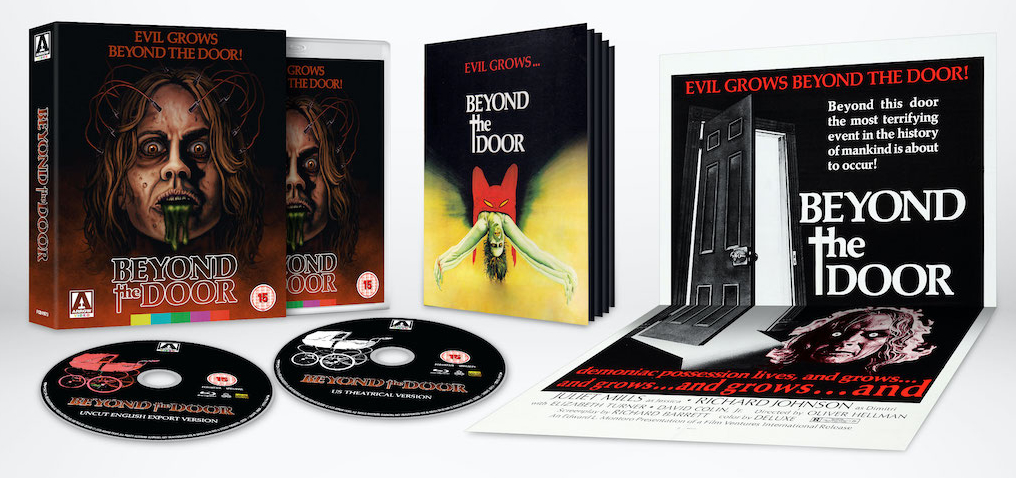
Due to the coronavirus pandemic, access to a physical disc to assess Beyond the Door’s audio and picture, plus the many special features, wasn’t possible in time for our review. But the contents of this release from Arrow Video are outlined below.

directors: Ovidio G. Assonitis & Robert Barrett.
writers: Ovidio G. Assonitis, Antonio Troisio & Robert Barrett.
starring: Juliet Mills, Gabriele Lavia, Richard Johnson, Nino Segurini, Elizabeth Turner, Barbara Fiorini, Carla Mancini & David Colin Jr.
